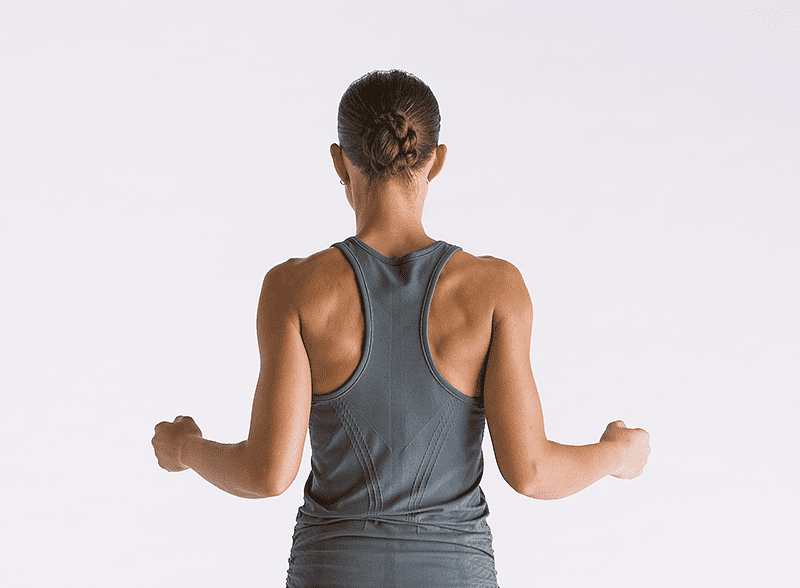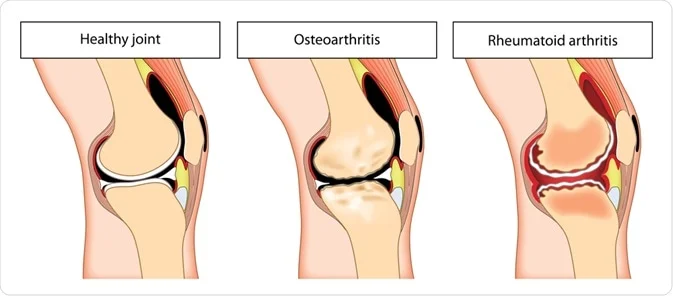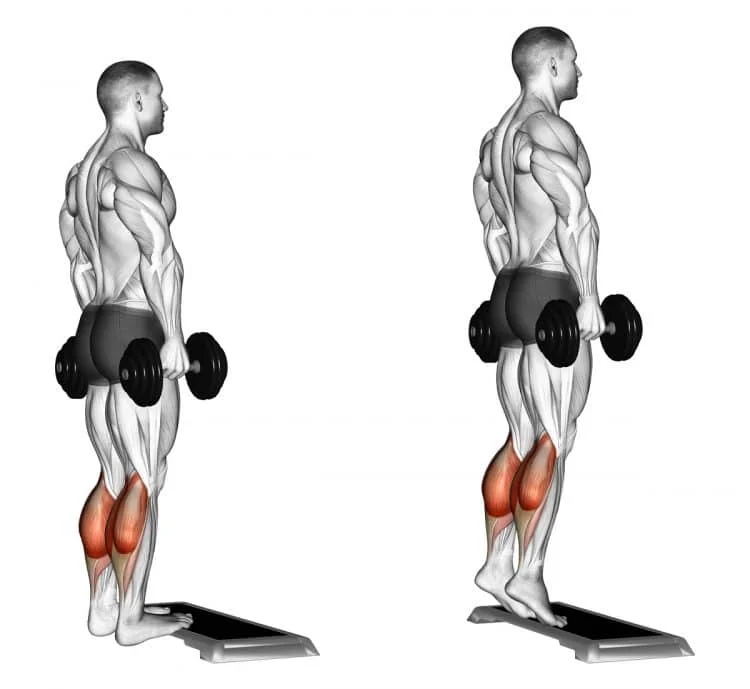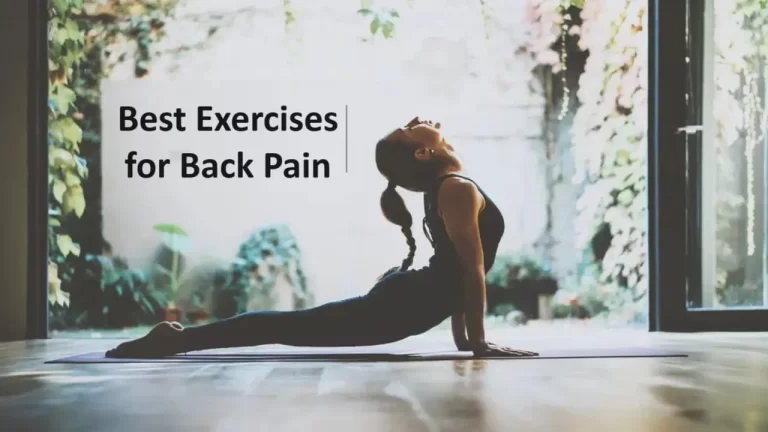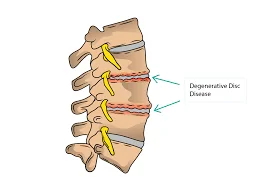15 Best Exercises For Shoulder Impingement
A mix of mobility, stretching, and strengthening exercises is frequently advised to reduce the pain to improve shoulder function caused by shoulder impingement.
We’ll look at some of the most significant Exercises For Shoulder Impingement in this article that help with management while encouraging recovery.
Introduction:
The scapula (shoulder blade), humerus (upper arm bone), clavicle (collarbone), and acromion (bone linked to the clavicle and shoulder blade) are the three bones that make up the shoulder joint. The rotator cuff, a group of muscles, tendons, and ligaments, holds all of these bones together. The rotator cuff tendons and muscles move behind the acromion as the arm is raised. Reduced space between the tendons, bursa, and acromion results in limitation, which in turn leads to impingement by compression.
Compression or irritation of the bursa (a sac filled with water) or tendons in the shoulder can result in shoulder impingement, a common ailment. Pain in the shoulder joints and limited range of motion make daily tasks difficult. Muscle imbalances around the shoulder joint, bad posture, and repetitive overhead motions are common causes of this condition. However, you may reduce the pain and restore shoulder function with the correct exercises and attention.
A general phrase used to describe pain or damage to the shoulder and subacromial space systems is shoulder impingement. Impingement pain may appear in a variety of ways, such as rotator cuff tendinosis (an irritation of the muscle-to-bone connection), bursitis, an inflammation of the fluid-filled sacs surrounding rotator cuff tears, which can be partial or total, are injuries to the shoulder and the muscle-bone junction.
Cause:
- Abnormalities in shoulder movement patterns may be associated with weakness or stiffness in the muscles involved in shoulder movement.
- Poor posture
- Repetitive overhead motions, such as those performed when playing tennis, swimming, golf, throwing a ball, or reaching or lifting anything high.
- Excessive use
- A severe trauma or injury to the shoulder.
- Osteophytes, or fragments of bone that narrow the gap, are a result of degeneration of the shoulder joints.
Signs and symptoms:
- Shoulder Pain
- Having trouble lifting the arm above shoulder level.
- The sensation of an aching shoulder and general stiffness.
- With time, it might become more damaging with increasing pain and decreasing strength.
- Additionally, a person may have or notice shoulder edema.
- The arm behind the back will likewise be difficult to reach.
- Weakness in the arm
- Pain when the affected side of the body is in a lying position.
- Achy or pain in the evening interferes with sleep.
Exercise benefits:
- Exercises help in improving shoulder joint function and lowering pain associated with it.
- You’ll be able to better manage your shoulder pain while improving your general health by including exercise in your everyday routine.
- Increases range of motion and mobility.
- Exercise has positive effects on one’s physical, emotional, and psychological health. Managing chronic pain can be emotionally taxing. Exercise releases endorphins, which are hormone-like hormones that improve mood and reduce pain.
Exercises For Shoulder Impingement:
Any exercise regimen that a physical therapist recommends must be followed. A physical therapist may suggest the exercises listed below for help in the healing of shoulder Impingement.
It’s important to remember that rest is necessary for the body to heal and to refrain from overexerting yourself or performing these exercises too frequently. A person must stop exercising right once if any new symptoms come or if pre-existing ones worsen.
Doorway stretch
- Place yourself in a doorway.
- With your affected arm, grasp the side of the doorframe just below shoulder height.
- Move your upper body away from the arm to experience a mild shoulder stretch.
- Hold this position for a few seconds.
- Then return to your neutral position.
- Then relax.
- Repeat this exercise 5 to 10 times.
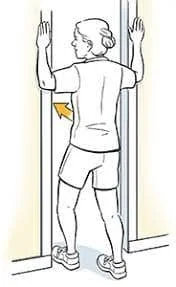
Shoulder Scaption Exercise
- Start by taking a standing position.
- Pick up and hold a dumbbell in your hands.
- Raise your arm slowly and extend it fully to a 45-degree angle from the front of your body.
- Hold this position for a few seconds.
- Return the elbow to your side slowly.
- Then return to your neutral position.
- Then relax.
- Repeat this exercise 5 to 10 times.

Thoracic Extension Variation
- Alternatively, use a compressed yoga mat or a foam roll.
- Lying on your back with your feet flat on the floor and your knees bent, position the foam roller just behind your shoulder blades.
- As you extend your thoracic spine over the foam roll place your hands behind your head.
- The “J-loop” should be done five to ten times, with a five- to ten-second hold between each repetition.
- Then return to your neutral position.
- Then relax.
- Repeat this exercise 5 to 10 times.
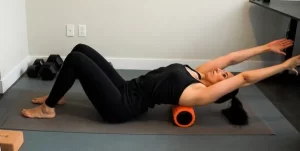
Crossover arm stretch
- Initially, find a comfortable spot on the ground.
- Lift and bring your right arm up to your chest.
- Hold your arm with your left hand, or place it in the opening created by your left elbow.
- Keep this position for a few seconds.
- Then return to your neutral position.
- Then relax.
- Repeat this exercise 5 to 10 times.
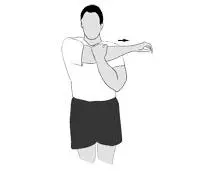
Side-Lying Shoulder External Rotation
- While lying on the uninjured side, place your head on a pillow in a neutral position.
- Take a straight-arm flexion position with your upper arm extended 90 degrees in front of you.
- Raise a small weight straight up from the surface to align it with your shoulder.
- Hold this position for a few seconds.
- Return it slowly to its lower position.
- Then return to your neutral position.
- Then relax.
- Repeat this exercise 5 to 10 times.
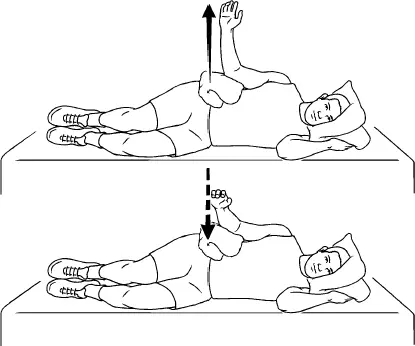
Wall angels
- Place your feet a few inches away from the wall while standing with your back to it, attempting to keep your upper back and buttocks in touch.
- To prevent a severe low back arch, pull your abdomen in against the wall.
- As you attempt to press your forearms against the wall, bend your elbows to a 90-degree angle so that your hands are pointing up.
- Move your arms up the wall and back down again slowly.
- Hold this position for a few seconds.
- Then return to your neutral position.
- Then relax.
- Repeat this exercise 5 to 10 times.
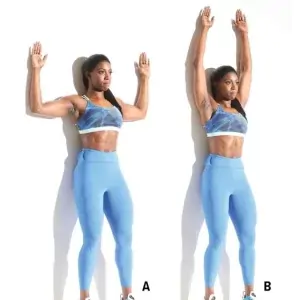
Floor Cobra Raises
You can strengthen the muscles in your middle and lower trapezius with this exercise, which will help you with your posture.
- Arms should be placed next to hips while you are lying down on the floor in the prone position.
- Draw your belly button toward your spine and squeeze your glutes to activate your core.
- Activate your core and glutes, raise your chest off the ground, raise your arms and back toward your hips, and rotate your thumbs upward.
- Hold this position for a few seconds.
- Then return to your neutral position.
- Then relax.
- Repeat this exercise 5 to 10 times.
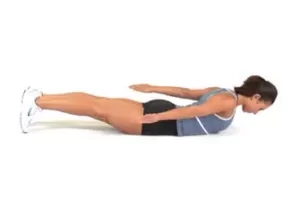
Shoulder isometric internal rotation
- Your body should be facing a door frame or the outside corner of a wall.
- The door entrance or corner is where you should be practicing your shoulder.
- As though attempting to turn your hand inward toward your belly button, bend your elbow ninety degrees, make a fist, and softly press into the corner wall or door jamb.
- Hold this position for a few seconds.
- Then gently release it.
- Then return to your neutral position.
- Then relax.
- Repeat this exercise 5 to 10 times.

Pendular
- Breathe deeply a few times while standing up on the ground.
- Lean forward and provide support with one hand on a table or counter.
- Keep the opposing arm hanging by your side.
- Gently move your arm forward and backward.
- Step your arm back and forth as you repeat the exercise, then rotate it in a circle.
- Then return to your neutral position.
- Then relax.
- Repeat this exercise 5 to 10 times.
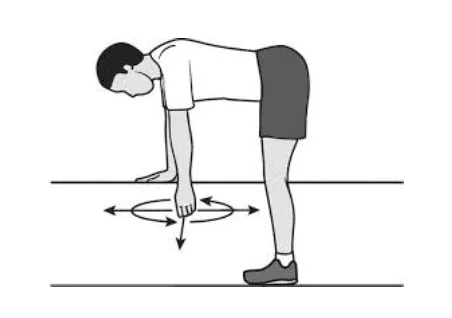
Isometric-shoulder-external-rotation
- Maintain your upright position, about a few inches away from a wall.
- Working on the shoulder closest to the wall is where you should focus your attention.
- Making a fist and pressing the back of your hand against the wall as though you were twisting your arm outwards will flex your elbow to a 90-degree angle.
- If you need a little extra padding, use a small towel.
- Put some gentle pressure on the wall for a short while.
- Release the strain on the wall gradually.
- Then return to your neutral position.
- Then relax.
- Repeat this exercise 5 to 10 times.

Shoulder blade squeeze
- Place your arms at your sides, palms facing forward, and maintain a straight back while standing.
- In the direction of the back, gently press the shoulder blades together.
- Hold this position for a few seconds.
- Relax and let go.
- Then return to your neutral position.
- Then relax.
- Repeat this exercise 5 to 10 times.
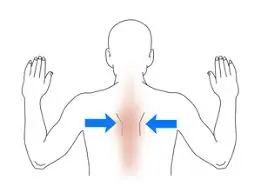
Resistance band pulls
- Starting with both hands gripping the band, extend your arms straight out in front of you.
- Squeeze your shoulder blades together for a time while maintaining an elevated chest while you concentrate on the scapular retraction.
- The contraction will be felt in your rear delts as well as your mid-back.
- As the front of the band gets closer and touches your chest, keep pulling apart with your elbows extended.
- Make sure you maintain your shoulders back throughout the exercise.
- Hold this position for a few seconds.
- Then return to your neutral position.
- Then relax.
- Repeat this exercise 5 to 10 times.
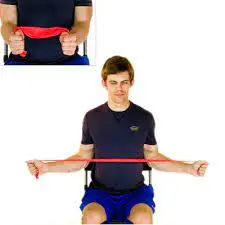
External Rotation with Resistance Band
- At waist height, fasten a resistance band to a stationary object.
- Place your hand on the affected shoulder and grip the other end of the band while standing sideways to it.
- Keep your upper arm close to your body and your elbow bent at a 90-degree angle.
- With your forearm rotated slowly away from your body, you should feel the band resisting you.
- Hold this position for a few seconds.
- Then return to your neutral position.
- Then relax.
- Repeat this exercise 5 to 10 times.
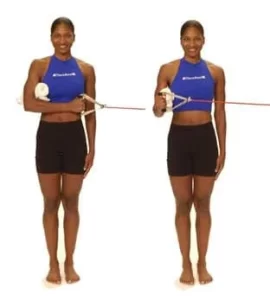
Passive Internal Rotation
- With one hand, hold the stick behind your back, and with the other, firmly grasp its opposite end.
- As demonstrated, move the stick horizontally to passively stretch the shoulder until it feels pulled but is not painful.
- Hold this position for a few seconds.
- Then return to your neutral position.
- Then relax.
- Repeat this exercise 5 to 10 times.
Passive External Rotation
- Grasp the opposite end of the stick with one hand while holding it.
- As directed, move the stick horizontally while maintaining the elbow of the shoulder you are stretching against your side of the body until you feel a sensation of pulling but no pain.
- Hold this position for a few seconds.
- Then return to your neutral position.
- Then relax.
- Repeat this exercise 5 to 10 times.
What precautions need to be taken while exercising?
- Stop your workout immediately if you experience any unexpected pain.
- Loose, casual attire that encourages mobility and relaxation is ideal for working out. Don’t dress in fashionable or tight clothing items.
- Take care to maintain a straight posture when exercising.
- Between every exercise, take some time to relax.
- Every exercise must be performed as per the protocol, which details the correct amount of repetitions for every exercise in addition to the warm-up and cool-down periods.
- While working out, take your time. You don’t have to go very quickly.
- To avoid muscular pain and overtraining, gradually increase the duration and number of repetitions in the exercises you do.
What times do you not work out?
- Fever
- Intense burning in the muscles
- If you don’t feel well.
- If you experience any numbness or pain.
- Headache
Which exercise should not be performed if you have shoulder impingement?
- Stay away from activities that are more painful for you.
- Avoid overhead tasks such as lifting and throwing.
- Exercises for Overhead Pressing: Dumbbell and barbell overhead press.
- Pulling Activities. Pull-Ups. Lat Pulldown Exercises.
Summary:
Impingement most often results from overuse of the shoulder. Athletes such as baseball players and swimmers may be more prone to this kind of injury. The patient can’t raise their arm above their head. finds it difficult to put on clothes and is unable to lift large objects. When resting on the affected side at night, the patient could experience difficulties. Individuals working with jobs requiring heavy lifting may also be particularly prone to shoulder impingement.
The greatest way to prevent damage may be to learn how to elevate and move the shoulder to the optimal position to prevent impingement. Simple therapies like rest and physical therapy are often well-received by most patients. Physical therapists use exercises and techniques such as isometrics, stretching, and strengthening to treat patients. Exercise builds up and improves the shoulder’s strength.
FAQ:
Is it possible for someone who has impingement in their shoulder to practice shoulder exercises?
It’s advised to rest your shoulder, but you can strengthen your rotator cuff and stretch the muscles in your arm, shoulder, and chest by performing some light exercises. These exercises can help prevent the worsening of shoulder impingement pain.
Which two symptoms indicate impingement of the shoulder?
Shoulder impingement syndrome is commonly characterized by weakening in the shoulder muscles, pain when using the arm above, and difficulties reaching up behind the back.
When a shoulder impingement occurs, how is it released?
Exercise and rest help many shoulder impingement syndrome patients recover. A cortisone injection into the shoulder joint may help minimize pain and swelling and speed up recovery, in addition to pain medications. Surgery is a possibility if the pain doesn’t go away and certain structures need care.
Does a shoulder impingement require stretching?
Although it’s best to rest your shoulder, you can do some light exercises to extend your arm, shoulder, and chest muscles as well as strengthen your rotator cuff. By performing these exercises, you can stop the worsening of shoulder impingement pain.
References:
- On December 13, 2023a, P. Tirgar. Mobile Physio’s Top 10 Shoulder Impingement Exercises. A mobile clinic for physical therapy. The Top 10 Shoulder Impairment Exercises: https://mobilephysiotherapyclinic.in/
- February 25, 2023; Sankhla, D. The causes, signs, treatments, and shoulder impingement exercises. Physiotherapy Clinic in Samarpan. Shoulder Impairment: https://samarpanPhysioclinic.com/
- July 3, 2023, B. S. D. Mph. Shoulder impingement exercises: Perform them at home. Back Intelligence. “How to Fix Shoulder Impairment” (https://backintelligence.com/).
- N. H. P. D. Ocs (n.d.). Activities for Shoulder Impingement at a Hospital for Special Surgery in Physical Therapy. Exercises for Shoulder Impairment: https://www.hss.edu
- On November 14, 2019, Johnson, J. Information on impingement of the shoulder. /articles/326991 on Medical News Today
- Image 2, 2018 May 31; Zetlin, S. Fit Pro Online: Functional and Sturdier Shoulder Caption: FPO. Function and stronger shoulders: a summary from https://www.fitnessprofessionalonline.com/articles/functional-anatomy
- Image 3, On May 31, 2024, Sofia, C. 7 Stretches for Your Thoracic Spine to Increase Mobility (provided by an Exercise Specialist). Coach Sofia Athletics. Thoracic spine mobility exercises: https://www.coachsofiafitness.com/
- Image 7, On July 8, 2016, Limits, L. L. N. How to Utilize Cobra. Live Unrestricted Life®. This is the link: https://blog.ghfc.com/post/147090190578/cobra-tip

